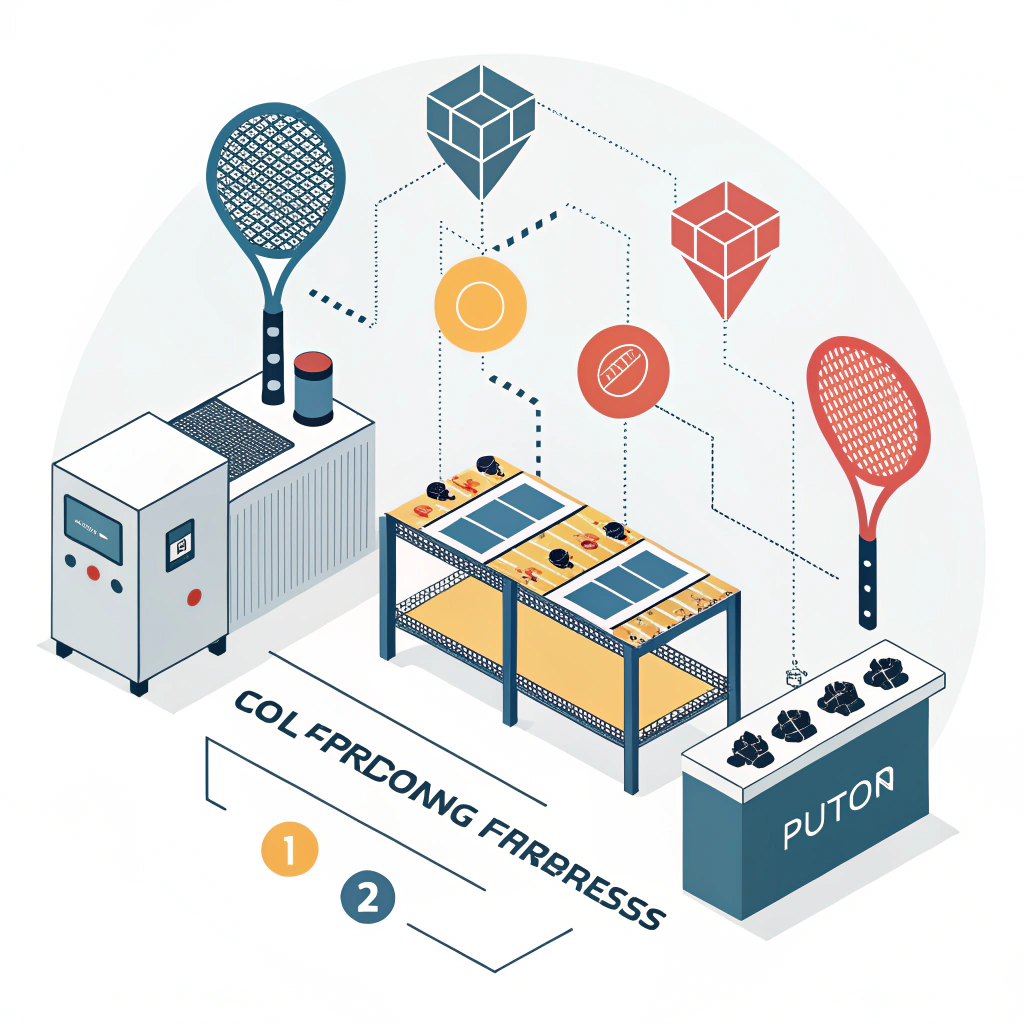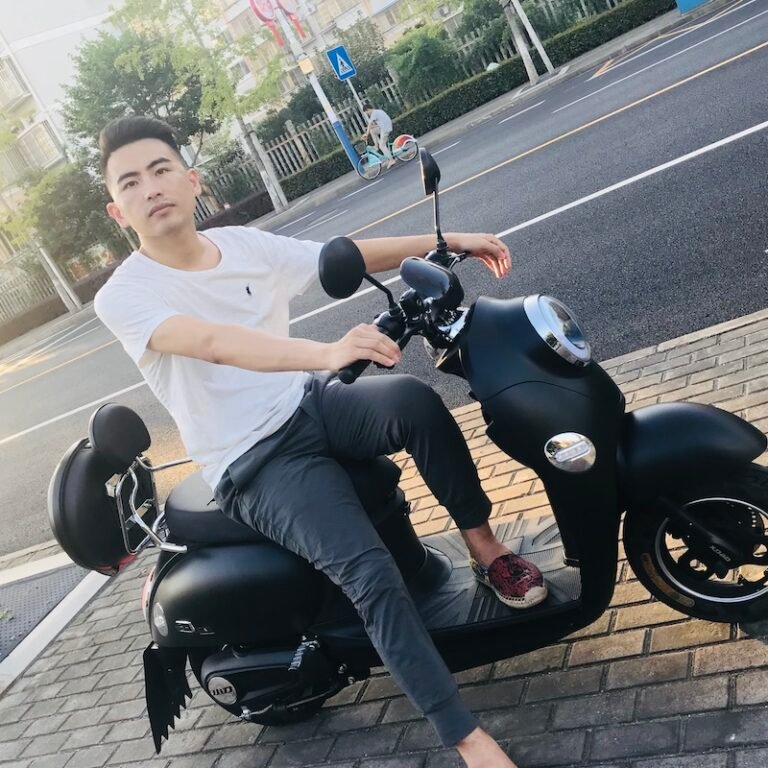In this article, we offer a quick overview: Pickleball paddle manufacturing can be highly rewarding if you master the proper production techniques and choose the right materials. This guide walks you through the challenges, compares production processes, and dives into material selection to empower your decision-making.
Pickleball is one of the fastest-growing sports, and with its rise comes tremendous demand for advanced, durable, and high-performance paddles. For business leaders looking to invest in or expand manufacturing capabilities, the key challenge is selecting the appropriate production process and materials that satisfy both performance requirements and cost-effectiveness.
The main issues faced by manufacturers in this space are:
- Balancing performance enhancement with production efficiency.
- Choosing materials that offer high durability, precise control, and a superior playing experience.
- Deciding among various advanced manufacturing techniques that influence turnaround time and production expense.
Understanding these challenges is the first step toward establishing a robust manufacturing strategy that can succeed in competitive B2B sports equipment markets.
High-performance pickleball paddles require precision manufacturing. At NEX Pickleball, our success in meeting market needs comes from expert use of three distinct production processes: Hot Pressing, Cold Pressing, and Thermoforming1. Each technique has its merits and its trade-offs.
Hot pressing is a well-known method where materials are heated while pressure is applied to form the paddle structure.
Advantages:
- High production efficiency suitable for large-scale output.
- Creation of strong paddles with excellent impact resistance.
- Maintains structural integrity, ensuring consistent performance under stress.
Disadvantages:
- Alters some intrinsic material properties, potentially affecting the paddle feel.
- Involves high equipment investment, which may not be viable for smaller operations.
Cold pressing is executed at room temperature and uses mechanical pressure to shape the paddle components.
Advantages:
- Greater precision in controlling paddle thickness and structural uniformity.
- Preserves the inherent properties of the materials, leading to enhanced control and responsiveness.
- Yields an authentic ball feel, particularly valued by professional players.
Disadvantages:
- Extended production cycles can lead to lower throughput compared to hot pressing.
- Requires significantly precise control machinery, translating to higher initial quality equipment costs.
Thermoforming involves heating materials to a soft state and then forming them with specialized molds.
Advantages:
- Offers intricate design possibilities and precise material distribution.
- Enhances paddle stability and performance through exact material shaping.
- Best suited for premium paddles that require custom design features.
Disadvantages:
- Longer production times and higher cost of equipment.
- Production is more suited for low-volume, high-margin products given the custom processes involved.
To help compare these processes, consider the following table:
| Production Process | Key Advantages | Main Disadvantages | Best Use Case |
|---|---|---|---|
| Hot Pressing | High efficiency; strong impact resistance | Potential alteration of material feel; high investment | Large scale manufacturing, cost-effective production |
| Cold Pressing | Precision control; retains material properties | Longer cycle times; requires high-end equipment | High-performance paddles requiring perfect touch and control |
| Thermoforming | Intricate design; precise shaping | Longer production time; higher costs | Customized, premium product lines |
The right process depends on your target market and manufacturing scale. For mass production where cost efficiency is the priority, hot pressing is ideal. However, if your focus is on premium quality and customized performance, thermoforming could be the best option.
Beyond production techniques, body construction and material choices are critical for paddle performance. The key is not only to select the proper material but also to understand how the production process can affect material properties.
Carbon Fiber2: The Pinnacle of High-Performance Materials
When discussing elite pickleball paddles, carbon fiber is synonymous with performance. There are various types, each providing unique benefits:
- 3K Carbon Fiber: Known for its combination of strength and flexibility, suitable for paddles requiring high rebound force while minimizing vibration.
- 12K Carbon Fiber: Features a higher thread density, yielding a smoother surface with increased hardness and long-lasting durability — a favorite for competitive scenarios.
- T300 Carbon Fiber: Offers outstanding tensile strength and a balanced performance of weight and durability, making it a prime choice among high-performance paddles.
Fiberglass paddles excel in providing a larger sweet spot and improving ball control. In our product lineup, E-Glass Fiberglass3 is the standard, chosen for its excellent elasticity and tensile strength. This material offers significant benefits, particularly suited for players who value a controlled touch and precise ball handling during fast-paced play.
Composite Materials4: Optimized for Versatility
Composite materials combine different elements to offer a balance of performance attributes:
- Carbon Fiber and Fiberglass Composites: Merging the best of both materials, these composites provide strength, durability, and quick response times.
- Bamboo Core Composite: Known for being lightweight and impact-resistant, bamboo cores deliver a crisp hitting feel, perfect for rigorous long-term play.
-
- Honeycomb Core5: Made either from high-density polymers or pulp, these cores excel in reducing vibrations while ensuring paddle longevity.
Beyond the outer layers, the paddle core plays a vital role in performance:
- Nomex Honeycomb Core: Offers superior shock absorption and stability, ideal for players seeking durability and consistency.
- Aluminum Honeycomb Core: Delivers a balanced combination of power and control while maintaining a lightweight design.
- Polymer Honeycomb Core: Provides enhanced elasticity and minimizes vibration, thus providing a more comfortable striking experience. This is especially attractive to recreational players and beginners.
The selection often involves trade-offs. For example, while carbon fiber paddles provide unmatched performance, they may come with higher production costs. Conversely, fiberglass options cater well to broader market segments, offering durability and adequate performance control without the premium cost.
For entrepreneurial business leaders, the journey to establishing a successful pickleball paddle manufacturing operation involves a mix of technical, financial, and market considerations. Here are the recommended steps:
-
Market Analysis and Business Planning:
Begin with a detailed market analysis. Understand trends in pickleball, potential B2B partnerships, and competitive landscapes. Evaluate the demand for premium versus standard equipment.
• Determine your target audience (recreational vs. competitive players).
• Align production capabilities with market segmentation. -
Selecting the Right Production Process:
Evaluate whether hot pressing, cold pressing, or thermoforming matches your business model.
• For high-volume production with cost considerations, hot pressing may be more efficient.
• For quality-focused, premium paddles where ball feel is paramount, cold pressing or thermoforming works best. -
Material Sourcing and Testing:
Identify reliable suppliers for premium materials like 3K, 12K, or T300 carbon fiber, as well as E-Glass fiberglass.
• Develop a testing phase to make sure the materials align with the final product performance expectations.
• Run pilot batches and subject them to rigorous field testing. -
Adopting Advanced Production Techniques:
Invest in high-precision machinery tailored to your chosen production methodology.
• Implement quality control measures at every production stage, ensuring that each paddle meets the high standards required by the industry.
• Optimize production parameters (temperature, pressure, cycle times) to boost efficiency without compromising quality. -
Customization and Product Differentiation:
Consider offering custom paddle designs. This allows customization in terms of weight, balance, grip sizes, and surface treatments.
• Leverage on-demand-print services to provide personalized brand experiences for clients.
• Maintain a dynamic production strategy that can quickly adapt to changing market trends and consumer preferences. -
Operational and Supply Chain Management:
Build robust supply chain networks that ensure timely procurement of materials and steady product output.
• Synchronize production cycles with market demand forecasts.
• Invest in technology for real-time quality monitoring and inventory management.
The following table summarizes the key factors to consider in your production strategy:
| Strategic Step | Key Considerations | Action Items |
|---|---|---|
| Market Analysis | Demand segmentation, competitive landscape | Conduct surveys, study market reports |
| Production Process Selection | Efficiency vs. quality; material compatibility | Evaluate process advantages; run pilot tests |
| Material Sourcing | Reliability of suppliers, material properties | Build supplier relationships; perform quality tests |
| Customization Options | Differentiation, brand value | Offer customizable designs; use on-demand printing |
| Operational Management | Supply chain reliability, cost control | Implement quality monitoring; invest in inventory tech |
To remain competitive in the evolving sports equipment market, it is essential to integrate best practices into every aspect of production. Here are a few guidelines to ensure operational excellence:
- Invest in Innovation: Continuous research into materials and production methods can unlock new opportunities for performance improvements. Keep an eye on innovators working with innovative composites and core structures.
- Maintain Rigid Quality Control: Every paddle should undergo comprehensive testing during and after production. This helps catch any deviations early, ensuring superior performance and durability.
- Embrace Customization: The trend in high-performance sports gear leans toward personalized experiences. Offering customizable paddle features increases customer satisfaction and builds brand loyalty.
- Plan for Scalability: Start with a lean production model and prepare for scaling. Investing in scalable machinery and modular production lines can help expand operations without compromising quality.
- Sustainability Considerations: In today’s global market, environmentally friendly production practices are not only responsible but also enhance brand credibility. Consider sustainable material options and energy-efficient production technologies.
The landscape of pickleball paddle manufacturing is dynamic and filled with opportunities for innovation and growth. By understanding the intricacies of production processes and material science, you can build a manufacturing line that delivers high-performance equipment tailored to specific market needs.
To move forward, consider:
- Conducting a thorough analysis of your target market and production goals.
- Testing and selecting the right combination of manufacturing processes that align with expected product performance.
- Collaborating with reliable material suppliers and investing in evolving production technologies.
- Prioritizing customization to cater to diverse market needs and build a unique product identity.
Taking these steps will not only help in optimizing operational efficiency and product quality but also establish you as a strong competitor in the global B2B sports equipment market.
Q: Is a pickleball business profitable?
A: Yes, a well-run pickleball manufacturing business can be profitable by focusing on high-performance products and expanding offerings such as custom paddle designs, equipment rentals, and training sessions to attract diverse clientele.
Q: How much does it cost to open a pickleball business?
A: The start-up costs for a pickleball business can vary significantly. For a franchise model, fees range from $800,000 to over $1 million. In addition to these fees, budget for expenses including equipment, facility leasing or purchase, marketing, and initial staffing.
Q: What is the markup on pickleball paddles?
A: Typically, dealers purchase paddles at a discount of 30% to 50% off the retail price. Larger online dealers often aim for a full 100% markup, meaning if a paddle costs $100 to produce, it might be sold for around $200 in the retail market.
-
Thermoforming: Read the article to understand how heating plastics to a malleable state before molding can enable intricate designs and customized performance features. ↩
-
Carbon Fiber: Read the article to discover how carbon fiber’s unique strength-to-weight ratio enhances paddle performance and durability. ↩
-
E-Glass Fiberglass: Read the article to learn about the properties of E-Glass Fiberglass and how it contributes to improved elasticity and controlled play. ↩
-
Composite Materials: Read the article to explore how combining different materials can optimize strength, durability, and responsiveness in paddle manufacturing. ↩
-
Honeycomb Core: Read the article to gain insights into how honeycomb core structures reduce vibrations and improve stability in high-performance sports equipment. ↩







